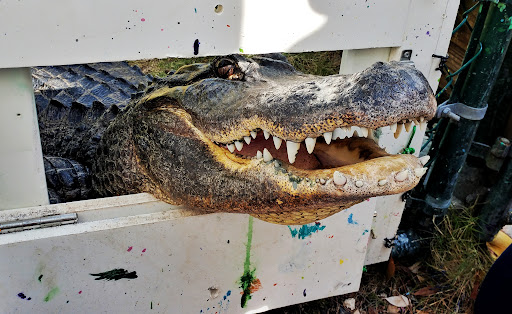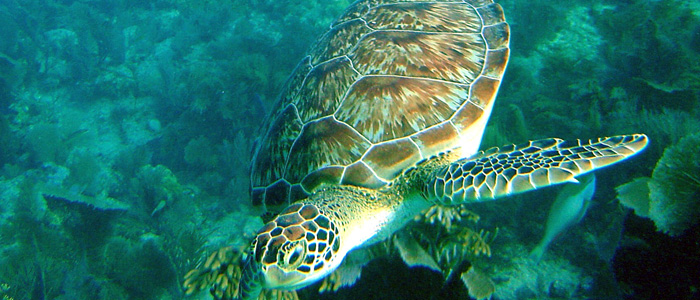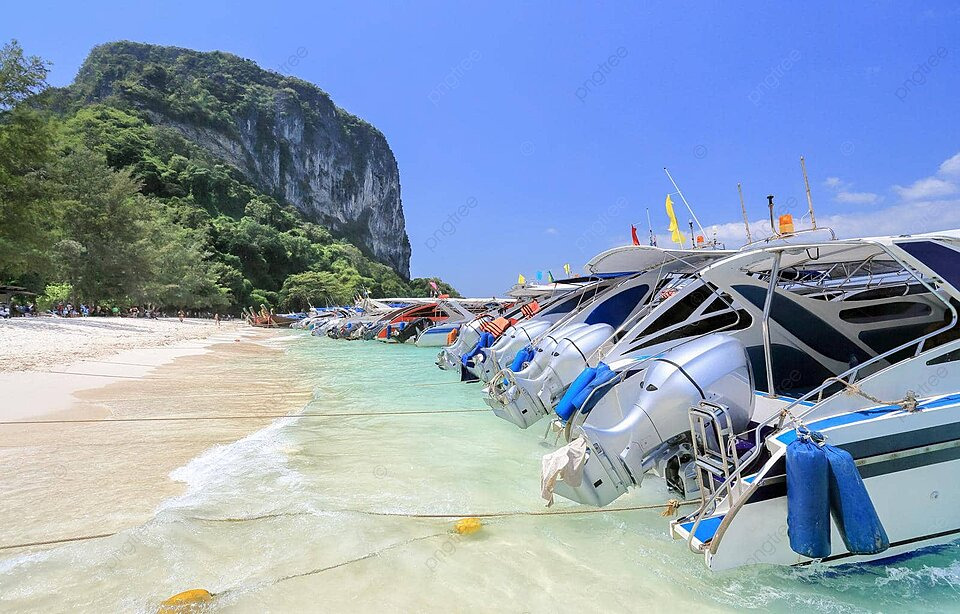John Pennekamp State Park: A Gateway to Florida's Underwater Wilderness
Located in Key Largo, Florida, John Pennekamp Coral Reef State Park boasts the title of the first undersea park in the United States.

Spanning around 70 nautical square miles, this park features vibrant coral reefs, diverse marine life, and lush tropical vegetation that make it a must-visit destination.
Known for its vast underwater worlds, John Pennekamp Coral Reef State Park offers unparalleled snorkeling and diving experiences.
Visitors can explore mangrove swamps, hike through tropical hammocks, and enjoy a variety of recreational activities including boating, kayaking, and picnicking.

The park's rich natural attractions also include glass-bottom boat tours, providing an accessible way to appreciate the wonders below the water's surface.
For those interested in more immersive adventures, camping facilities are available, allowing guests to fully experience the park's unique environment.
Beyond leisure and adventure, John Pennekamp Coral Reef State Park serves an essential role in conservation and research.
Established in 1963 to protect the living coral reef, the park continues to be a sanctuary for marine biodiversity.
This combination of recreational opportunities and ecological significance makes it a standout destination in the Florida Keys.

Key Takeaways
- The park offers unique snorkeling and diving experiences.
- Visitors can enjoy a range of activities such as boating and hiking.
- It plays a key role in marine conservation and research.
Park Overview
John Pennekamp Coral Reef State Park in Key Largo is celebrated as the nation's first undersea park, featuring coral reefs, seagrass beds, and mangrove swamps.
It spans 70 nautical square miles and draws visitors for its unique underwater adventures and ecological importance.
History and Designation
John Pennekamp Coral Reef State Park was established in 1963. Named after John D. Pennekamp, a Miami newspaper editor and environmental activist, the park was the first of its kind in the United States, preserving n the colorful reefs of the Florida Keys.
Planning began in the 1930s, and its establishment marked a significant step in marine conservation.
The park, along with the adjacent Florida Keys National Marine Sanctuary, covers a vast area dedicated to protecting marine life and habitats.

Park Amenities and Activities
Visitors to John Pennekamp Coral Reef State Park can enjoy a range of activities.
There are boat tours, snorkeling, and scuba diving to explore the vibrant coral reefs.
The park also offers glass-bottom boat tours for a dry underwater experience.
On land, there are hiking trails through mangrove swamps and tropical hammocks.
Facilities include picnic areas, a visitor center with aquariums, and a campground.
The beach areas are perfect for swimming and sunbathing, providing a full day of activities for families and outdoor enthusiasts.

Ecological Significance
The ecological importance of John Pennekamp Coral Reef State Park cannot be overstated.
The park protects extensive coral reefs, which serve as crucial habitats for a variety of marine species.
Seagrass beds and mangrove swamps within the park play vital roles in preserving water quality and providing breeding grounds for fish and other sea life.
The park’s designation aids in protecting the biodiversity of the Florida Keys and supports research and conservation efforts.
This protected area is also noted for its inclusion in the National Register of Historic Places, underscoring its historical and environmental value.
Natural Attractions
John Pennekamp State Park in Key Largo, Florida, showcases a variety of natural attractions. Visitors can enjoy vibrant coral reefs, diverse marine life, tropical hammocks, nature trails, and serene mangrove swamps.
Coral Reefs
The coral reefs at John Pennekamp State Park are its main draw. These reefs are the first undersea park in the U.S., covering about 70 nautical square miles. Visitors can see colorful coral formations and seagrass beds.
Snorkeling and diving are popular activities here. The clear waters provide excellent visibility, allowing divers to see various reef structures and marine creatures. Guided tours are available for those who prefer a structured experience.
Marine Life
The park is renowned for its rich and diverse marine life.
Visitors can spot various fish species, including angelfish, parrotfish, and barracudas.
Sea turtles and stingrays are also common sights.
Wildlife viewing extends beyond fish, with possibilities to see dolphins and manatees. These encounters offer a glimpse into the underwater world without venturing far from the shore.

Tropical Hammocks and Nature Trails
Tropical hammocks in John Pennekamp State Park offer a unique experience. These upland areas are home to different plant species, including wild tamarind.
The Wild Tamarind Trail is a popular route, providing a closer look at the local flora.
While walking these trails, visitors might spot various birds and land animals. The trails are well-marked and easy to navigate, making them suitable for all age groups.
Mangrove Swamps
Mangrove swamps are another essential part of the park's ecosystem.
These swamps serve as nurseries for various marine species and are crucial for the health of the adjacent coral reefs.
Kayaking through these swamps offers a peaceful way to observe the intertwining roots and the ecological interactions within. These swamps are also home to various bird species, making them ideal for bird watching and nature photography.
Park Experiences
John Pennekamp Coral Reef State Park offers a variety of engaging experiences for visitors. From exploring vibrant marine life via glass-bottom boats to diving into the clear waters for snorkeling and scuba adventures, there is something for everyone.
Visitor Center and Exhibits
The Visitor Center at John Pennekamp Coral Reef State Park is the perfect place to start.
It features a saltwater aquarium showcasing colorful tropical fish, coral, and other marine species.
Natural history exhibits provide insights into the unique ecology of the park.
Interactive nature videos and presentations help explain the significance of coral reefs and conservation efforts.
There is also a gift shop where visitors can purchase souvenirs and educational materials.
Glass-Bottom Boat Tours
One of the highlights of John Pennekamp State Park is the glass-bottom boat tours.
These tours offer a unique way to experience the vibrant underwater world without getting wet.
Departing from the park's docks three times daily, the boat trips take visitors over the coral reef systems, where they can observe an array of marine life such as tropical fish and sea turtles.
These tours are a must for those looking to enjoy the beauty of the reef in a comfortable and accessible manner. For more details, visit Experiences & Amenities | Florida State Parks.

Snorkeling and Scuba Diving
For an immersive underwater adventure, snorkeling and scuba diving are top activities at the park.
Known as the first undersea park in the U.S., it spans approximately 70 nautical square miles of coral reefs, seagrass beds, and mangrove swamps John Pennenkamp Coral Reef State Park.
Snorkelers and scuba divers can explore the extensive coral reef systems teeming with marine life.
Equipment rentals and guided tours are available to ensure a safe and enjoyable experience.
Remember, the waters are crystal clear, offering excellent visibility to spot vibrant marine creatures and beautiful coral formations.
Water Sports and Beach Activities
The park also offers various water sports and beach activities.
Visitors can swim in designated areas or enjoy a relaxing day lounging on the sandy beach.
Water sports enthusiasts can rent kayaks or paddleboards to explore the park's tranquil waters and mangrove trails.
Fishing is allowed in specific areas, and picnic facilities are available for those looking to enjoy a meal outdoors.
There are also nearby convenience stores and supermarkets like Publix and Winn-Dixie for any additional supplies (Florida Rambler).
Recreation and Facilities
John Pennekamp State Park offers a variety of recreational activities and facilities to cater to all visitors. Whether you're looking to camp, picnic, or engage in boating and fishing, the park has amenities to ensure an enjoyable experience.
Camping and Accommodations
The park features 47 full-facility sites for both tent and RV campers, providing accessible restrooms and hot showers.
The campground offers a relaxing environment with easy access to the park's main attractions.
In addition, John Pennekamp State Park has youth/group campsites for larger groups.
These sites are equipped with necessary amenities to accommodate group camping trips. The park does not have cabins, but campers can enjoy full hookup sites that offer electricity, water, and sewer connections.
Picnicking and Day-Use Areas
Picnickers can enjoy designated picnic areas with tables and grills scattered throughout the park.
These areas provide a great spot for families and friends to relax and have a meal.
The park also offers covered pavilions that can be reserved for larger gatherings or special events, ensuring a comfortable spot even during hot or rainy weather.
Day-use areas are perfect for those looking to spend a few hours in the park without an overnight stay.
These areas include amenities like shaded spots and playgrounds for younger visitors.
Boating and Fishing
Boating is a popular activity at John Pennekamp State Park. Several boat ramps are available for easy access to the water. Mooring buoys are also available for boats looking to secure their spot while exploring the coral reefs and underwater scenery.
Fishing enthusiasts can enjoy fishing in designated areas, ensuring a great experience whether you are onshore or offshore. Those looking to fish within the park need a saltwater fishing license. Licenses can be easily obtained online or at nearby locations, ensuring compliance with state regulations.
With its diverse range of activities and amenities, John Pennekamp State Park is well-equipped to provide a fulfilling outdoor adventure for all visitors.
Essential Information
John Pennekamp Coral Reef State Park, located in Key Largo, Florida, offers unique marine experiences with coral reefs and diverse sea life. Staying informed about park admission, safety, and amenities ensures a smooth visit.
Park Admission and Regulations
Admission Fees:
- Person: $8.00 per vehicle (1 person), plus 50 cent per person.
- Vehicle: $4.00 for single-occupant vehicles, $2.00 for cyclists and pedestrians.
- Reservations: Required for group pavilions.
- Utility Fee: $8 per day for electric and sewer hookups for overnight guests.
Operating Hours:
- Open: Daily from 8 AM until sunset.
Regulations:
- Fishing: Only allowed in designated areas.
- Permits: Required for scuba diving and snorkeling.
- Pets: Allowed but must be on a leash and only in specific areas.
Safety and Conservation Guidelines
Safety Tips:
- Snorkeling and Diving: Always check equipment and dive with a partner.
- Weather: Monitor local weather forecasts to avoid rough seas.
- Swimming: Stay within designated areas and heed lifeguard instructions.
Conservation Efforts:
- Coral Protection: Do not touch or step on coral reefs to prevent damage.
- Marine Life: Avoid disturbing marine animals and plants.
- Waste Management: Dispose of trash properly; littering is strictly prohibited.
Emergency Guidelines:
- Contact: Park rangers or medical personnel in case of emergencies.
- First Aid: Available at designated stations throughout the park.
Amenities and Accessibility
Facilities:
- Restrooms: Located at various points for visitor convenience.
- Showers: Available for guests, particularly useful after water activities.
- Pavilions: Rentable for group activities; ensure to make reservations.
Accessibility:
- Trail Access: Some trails and routes are wheelchair accessible.
- Electric Utility: Hookups available for RVs and camping equipment.
- Parking: Ample spaces for cars and larger vehicles.
Visitor Services:
- Information Centers: Provide maps, brochures, and current activity schedules.
- Food Services: On-site refreshment stands and picnic areas.
- Gear Rentals: Snorkeling and diving gear available for rent.
Adventure and Learning
John Pennekamp Coral Reef State Park provides a blend of adventure and education, making it an ideal destination for both thrill-seekers and history buffs. Visitors can explore the marine wonders through scuba and snorkeling courses, and gain knowledge through various educational programs and tours.
Scuba and Snorkeling Instruction
John Pennekamp Coral Reef State Park offers comprehensive scuba and snorkeling instruction. For beginners, the park features a Resort Course, which introduces the basics of scuba diving. Advanced divers can benefit from the PADI Five-Star Gold Palm Dive Shop, known for its quality instruction and certification programs.
Scuba Courses cater to different skill levels, ensuring everyone from novices to seasoned divers can participate. The park's scuba diving tours provide direct access to vibrant coral reefs and diverse marine life.
One unique feature is their wheelchair-friendly snorkeling vessel, allowing inclusive access to underwater adventures. These services make it convenient and enjoyable for everyone to experience the underwater world.
Educational Programs and Tours
Educational programs at John Pennekamp State Park cover a wide range of topics related to marine life and environmental conservation. Visitors can take part in guided boat tours that offer insights into the park’s ecosystem, including coral reefs and mangrove swamps.
The park’s visitor center hosts an aquarium and various exhibits. These showcases provide an in-depth look at the area’s marine habitats. Additionally, interactive displays make learning engaging for all age groups.
Special programs highlight the importance of environmental activism, inspired by John Pennekamp, the park’s namesake. These educational tours and activities help instill a deeper appreciation for marine conservation among visitors.
For more information about what the park offers, check out the park's official site.
Conservation and Research
John Pennekamp Coral Reef State Park works tirelessly to protect its underwater habitats and promote marine conservation. The park engages in a number of initiatives and programs to maintain and restore the health of its coral reefs, seagrass beds, and mangrove swamps.
Marine Preservation Efforts
Preserving marine life and ensuring the health of coral reefs are top priorities. The park spans 70 nautical square miles, including the protected coral reefs. These designated areas prohibit destructive activities such as spearfishing, which helps maintain the fragile ecosystem. The park also collaborates with various environmental organizations to monitor water quality and marine species. This cooperative effort helps identify and mitigate threats to the marine habitat and advocates for sustainable practices.
Habitat Restoration Projects
Restoration projects are vital for maintaining the park's diverse ecosystems. Efforts include replanting seagrass and restoring mangrove swamps. These habitats are crucial for fish and other marine life. The park also works on coral reef restoration by transplanting healthy coral fragments to damaged areas. These projects invite collaboration from experts and volunteers alike, emphasizing the park’s commitment to preserving its natural beauty and biodiversity.
Engagement and Volunteering Opportunities
Visitor engagement and volunteer participation are crucial in supporting the park's conservation goals. The park offers various educational programs at its Environmental Education Visitor Center and Aquarium, where visitors can learn about the impact of human activities on marine ecosystems. Additionally, the Friends of John Pennekamp group organizes events and volunteer activities. These opportunities allow people to contribute firsthand to the preservation efforts, whether through research assistance or habitat restoration.
Getting There
John Pennekamp State Park is located in Key Largo, Florida, and is easily accessible by car. Just follow the main routes from Miami to Key Largo. Public transportation is also an option, with several shuttles and bus services available.
Directions and Transportation
Key Largo's John Pennekamp State Park is situated at 102601 Overseas Highway (MM 102.5), Key Largo, FL. It's about 60 miles south of Miami. From Miami, drivers can take the scenic route along the Overseas Highway, which is part of U.S. Route 1. The highway offers beautiful views of the Atlantic Ocean.
Public transportation options include bus services from Miami to Key Largo. Several shuttle services run daily between these points. Check for schedules and fares online before planning your trip.
Locals and tourists often prefer renting a car for the flexibility it provides exploring other attractions in the Florida Keys. The park has ample parking space available for visitors.
Frequently Asked Questions
John Pennekamp State Park offers a range of activities and amenities. Below, find information on camping reservations, park hours, guided kayak tours, entrance tickets, snorkeling rules, and opportunities for spotting manatees.
How can I make reservations for camping at John Pennekamp State Park?
To make camping reservations, call the park's camping information line at (800) 326-3521. The park features 47 full-facility sites suitable for both tents and RVs, with easy access to restrooms and hot showers.
What are the operating hours for John Pennekamp Coral Reef State Park?
John Pennekamp Coral Reef State Park is open daily from 8:00 AM until sunset. The visitor center is open from 8:00 AM to 5:00 PM. Concession stand hours vary by season.
Are there guided kayak tours available at John Pennekamp, and how do I book one?
Yes, guided kayak tours are available at John Pennekamp. For booking details, call the park directly at (305) 451-6300. These tours offer a unique way to explore the park’s mangroves and waterways.
Do I need to purchase tickets to enter John Pennekamp Coral Reef State Park, and where can I buy them?
Tickets are required for park entry. You can purchase them at the front gate upon arrival. For general information, contact the park’s front gate at (305) 676-3777.
Is it possible to snorkel independently at the park, and what are the rules regarding this?
Independent snorkeling is allowed within designated areas at the park. Visitors should follow safety guidelines and only snorkel in marked locations. Equipment rentals are available if needed.
What opportunities for spotting manatees are available within the park?
Manatee sightings often occur in the park’s mangrove swamps and coastal waters. You can see these gentle giants best by visiting during their active months between November and March.
Charlie is Editor-in-Chief of Sea Magazine






